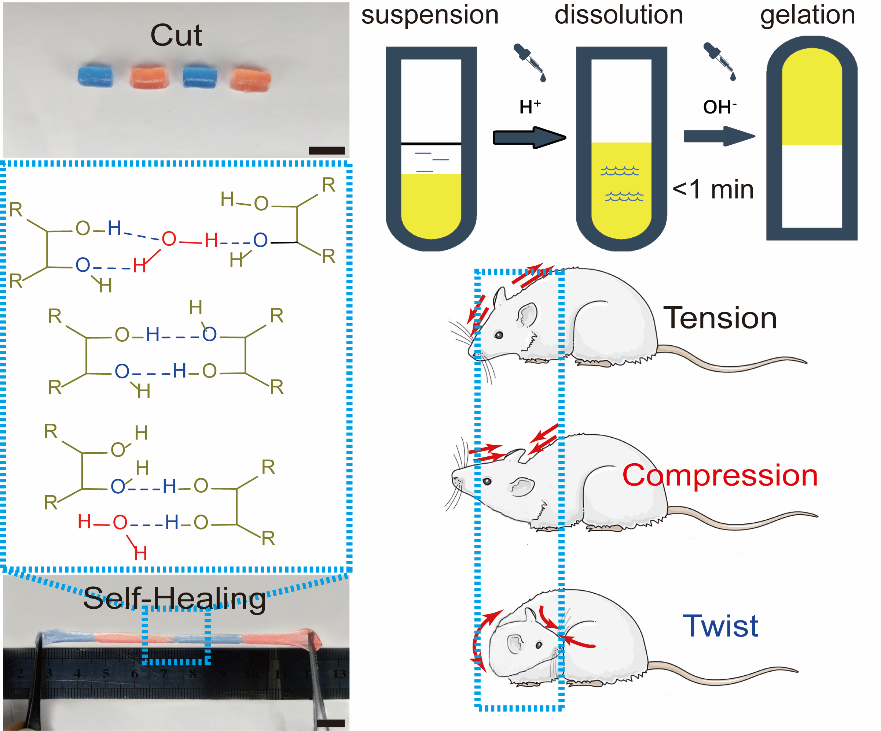18 June 2020,a research paper by Prof. Guang Yang’s group entitled“Rapid fabrication of self-healing, conductive and injectable gel as dressings for healing wounds in stretchable parts of the body” was published in Advanced Functional Materials.
Skin wounds on stretchable parts of the body including the elbows, knees, wrists, and nape usually undergo delayed and poor healing due to the interference of their frequent motion. Ordinary dressings that are not flexible enough face difficulty to promote wound healing due to the mismatching between the mechanics of the dressing materials and the wounds.

Figure 1. Schematic diagram of rapidly fabricated self-healing gel applied for the wound repair in the stretchable site
To overcome this issue, Prof. Guang Yang’s group Guang (Corresponding Author) from College of Life Science and Technology, HUST and her cooperators from the Microfluidics Nanobiomedical Research Group, SUSTech have reported a conductive, injectable, self-healing hydrogel that can be quickly prepared for active wound repair. The author prepared a self-healing hydrogel (GS) based on cationic guar gum, which could be achieved within 1 min in a two-steps method through acid promoted hydration and alkali promoted gelation. Further, commercially available acidic, conductive PEDOT: PSS aqueous solution as an acid component can be easily introduced into the fabrication system to functionalize the gel (PPGS).
This research was published in the journal Advanced Functional Materials titled "Rapid fabrication of self-healing, conductive and injectable gel as dressings for healing wounds in stretchable parts of the body". The doctoral student Sixiang Li from HUST and the doctoral student Le Wang from SUSTech are the first authors of the article. The cooperative institutions are Southern University of Science and Technology and Guangzhou Nanotechnology Research Institute.
Article links : https://onlinelibrary.wiley.com/doi/abs/10.1002/adfm.202002370